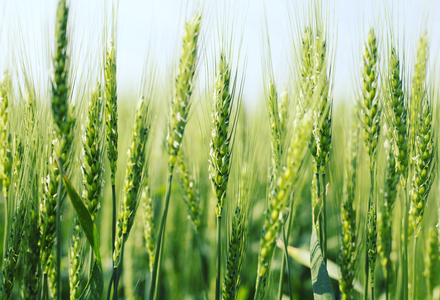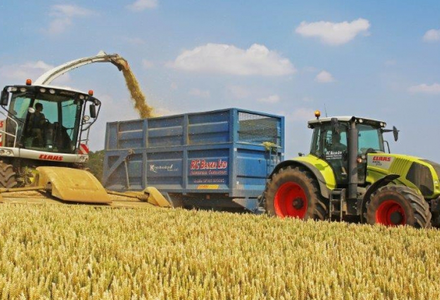Flexible wholecrop offers quantity and quality option
17 June 2019
Wholecrop cereal silage provided a lifeline for many producers facing grass silage shortages with last summer’s drought. So is this flexible forage worth considering again?
_copy_detail.jpg?1559589437)
While a proportion of last year’s wholecrop was undoubtedly made in response to a lack of grass growth, farmers who made it were generally happy with it, reports Volac silage specialist, Jackie Bradley.
But while wholecrop winter wheat can yield 12-15 tonnes of DM per hectare – which is more than three cuts of grass in a dry season – bulk isn’t the only reasons for considering it, she adds.
Why consider wholecrop
“The beauty of wholecrop is you can assess grass silage stocks before deciding whether to make it,” says Mrs Bradley, “or whether to leave the crop to harvest it as mature grain. Even if you’re not growing cereals, you can often buy standing crops.
However, wholecrop isn’t just a source of tonnage. With the drive to reduce bought-in feed costs, it’s quality contribution to the ration shouldn’t be overlooked.
“Harvested at the right time, wholecrop is a good source of starch, and starch is important for milk protein.
It also provides fibre, and fibre can increase butterfat. If you’re one of the growing number of farmers making multi-cut grass silage, including extra fibre can be particularly important. Younger-cut grass contains less stem material, so it tends to be lower in fibre than conventionally-cut grass.
Wholecrop as part of a mixed forage diet
In addition, including wholecrop as part of a mixed forage diet can increase DM intake, says Mrs Bradley, which is important for high-yielding herds. When making wholecrop, one of the keys to maximum feed value is achieving a good preservation, she adds.
“Wholecrop has the flexibility that it can be harvested over a range of dry matters, and preserved by fermentation if made between 30-55% DM. Alternatively, drier wholecrop can be treated with a urea treatment when there is no green material, including weeds, left in the crop.
“Many farmers opt for fermented wholecrop as a low cost and straightforward method. It offers a highly palatable and nutritious option. When making fermented wholecrop, harvesting at 45-50% DM offers an excellent balance between yield and starch content, as well as moisture and sugars for the fermentation. Starch content can be as high as 35%.
“You can still make fermented wholecrop at lower dry matters, down to 30%, but this will reduce starch content as the crop is less mature.
“Similarly, fermented wholecrop can be made at up to 55% DM if you’re looking for more starch, higher yield and extra ‘scratch factor’ in the diet. However, increased care must be taken to consolidate well,” she adds, “as it is at increased risk of heating up.”
Machinery-wise, Mrs Bradley says crops cut above 45% DM will require a processor to crack the grains to prevent them passing straight through the animal.
Typically, she says 45-50% DM occurs when the grain is moving from the ‘soft to hard Cheddar cheese’ stage but with no ‘milk’ detectable, which is about 3-4 weeks before the crop is fully mature. “Be careful not to overshoot the optimum harvest window. Once DM reaches 45% it can increase rapidly by 2% a day during hot weather. This caught some people out last summer, with some crops harvested a bit past their prime.
Using silage additives for wholecrop
For preservation, as well as helping the fermentation, remember that wholecrop is prone to losses from heating as a result of yeast and mould growth, especially if it’s made drier, and is at risk of mycotoxins.
Just as when making maize silage, it therefore makes sense to consider a dual-acting additive designed to both improve fermentation and reduce heating, so that you have both bases covered.
The combined additive Ecocool, for example, has been designed for exactly this purpose. It contains two beneficial bacteria: Lactobacillus plantarum MTD/1 for an efficient fermentation, and Lactobacillus buchneri PJB/1 for reduced heating and spoilage.
Find out more about Ecocool or download the full product brochure here.
“Pay attention also to good clamp management. Fill clamps in layers a maximum of 10-15 cms deep to aid consolidation, and seal thoroughly to exclude air, which is important for an efficient fermentation and to manage heating. Another tip is to put a layer of at least a grab depth of fresh grass on top of the wholecrop before sealing to increase the weight on top of the wholecrop and help keep the top of the clamp cool.
“Chop length is also important. Diets need to contain sufficient effective fibre for optimum rumen functioning, so aim for a chop length of around 2 cms,” Mrs Bradley concludes.

